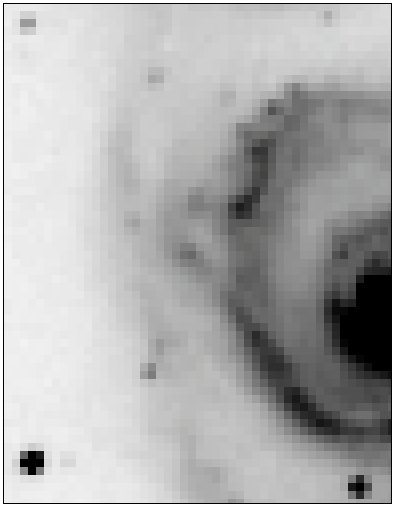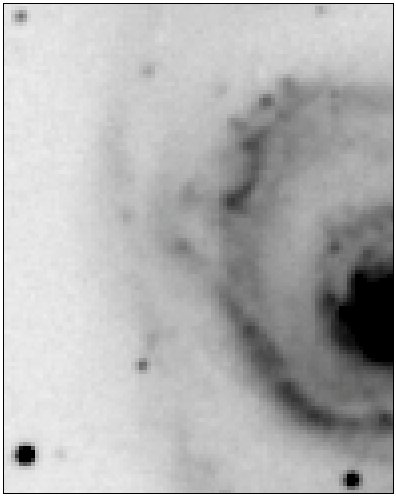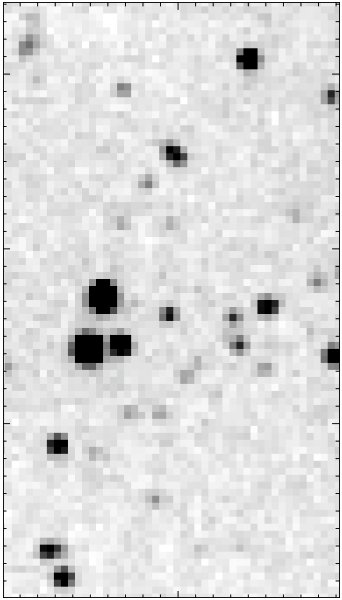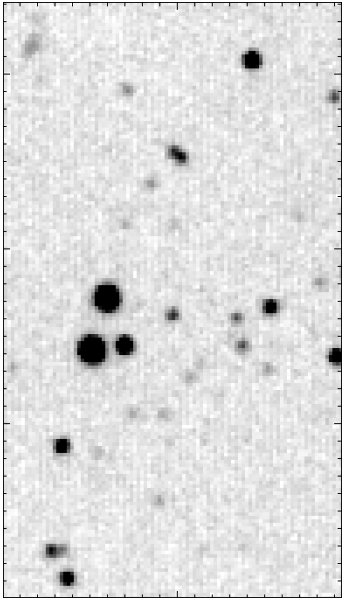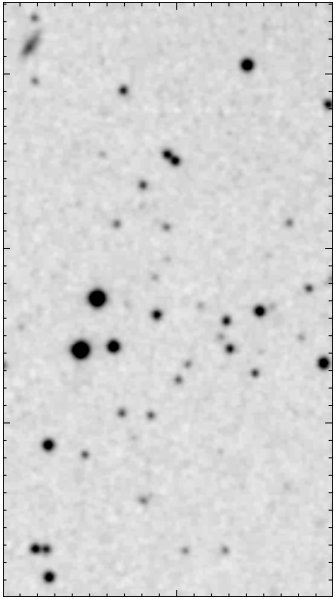FIRST LIGHT
On April 18 1998, Audine saw the sky for the first time through a telescope (a flat-field
camera with 190 mm opening).
The location was Ramonville-Saint-Agne located in the suburbs of Toulouse
(code UAI 959). The limiting magnitude was 2.5 to the naked eye.
Target object was the galaxy M51. Twenty exposures of 60 seconds integration time
were made in binning 2x2 mode with a prototype camera, afterwards they were combined to
produce this document :
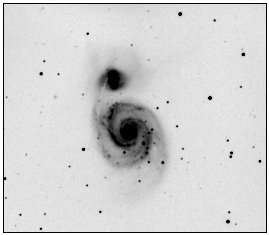 The first deep sky image made with an Audine camera.
The first deep sky image made with an Audine camera.
Judicious compositing of those 20 single images permits reconstructing an image
with an almost doubled resolution :
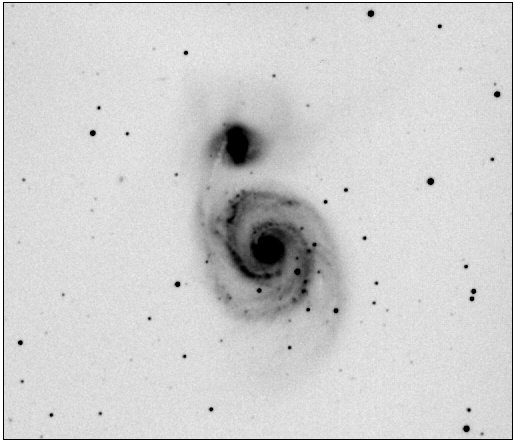 Increased resolution by optimised compositing of the first sequence of images
acquired with an Audine camera prototype (processing: QMiPS32).
Increased resolution by optimised compositing of the first sequence of images
acquired with an Audine camera prototype (processing: QMiPS32).
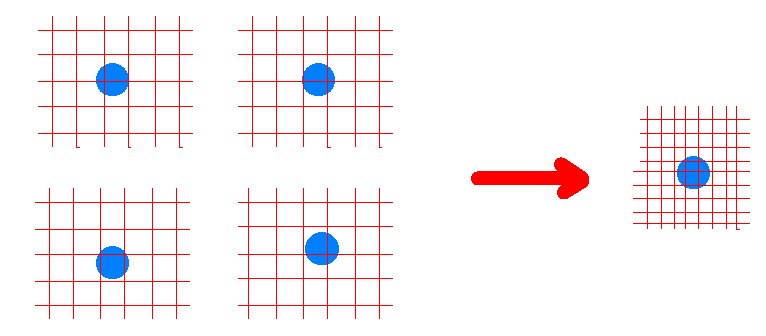 The principle of optimised compositing. During the compositing the images
are moved judiciously a fraction of a pixel, this is made possible by resampling the image to a finer
matrix than the original images, thus increasing the resolution.
Demonstration of the gain in spatial resolution with optimised
compositing in an enlarged portion of the first Audine image. On the left, a
traditional composite, made by simply adding the individual images in binning 2x2 mode.
On the right, the optimised composite permits reaching a resolution close to what we
would get with image acquisition in binning 1x1 mode.
A strongly enlarged field with stars and galaxies observed with the
first Audine camera on 19/05/1998 near Ramonville-Saint-Agne with a flat-field
camera of 190 mm opening (F/D=4). On the left a composite of 16 exposures of 2
minutes each in binning 2x2 mode. In the middle, the result of optimised compositing.
On the right, for comparison, the same field in the Palomar Observatory Sky
Survey. The limiting magnitude reached by Audine is in the order of 19.5 despite
the fact the observation was made in an urban region that has heavy light pollution.
It should be noted that these images were acquired without using a shutter.
The principle of optimised compositing. During the compositing the images
are moved judiciously a fraction of a pixel, this is made possible by resampling the image to a finer
matrix than the original images, thus increasing the resolution.
Demonstration of the gain in spatial resolution with optimised
compositing in an enlarged portion of the first Audine image. On the left, a
traditional composite, made by simply adding the individual images in binning 2x2 mode.
On the right, the optimised composite permits reaching a resolution close to what we
would get with image acquisition in binning 1x1 mode.
A strongly enlarged field with stars and galaxies observed with the
first Audine camera on 19/05/1998 near Ramonville-Saint-Agne with a flat-field
camera of 190 mm opening (F/D=4). On the left a composite of 16 exposures of 2
minutes each in binning 2x2 mode. In the middle, the result of optimised compositing.
On the right, for comparison, the same field in the Palomar Observatory Sky
Survey. The limiting magnitude reached by Audine is in the order of 19.5 despite
the fact the observation was made in an urban region that has heavy light pollution.
It should be noted that these images were acquired without using a shutter.




